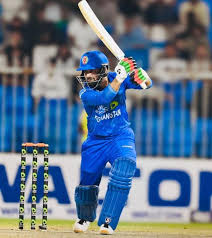Abhishek Sharma’s Dominance and the Search for an Answer
When Abhishek Sharma was in full flow at the Wankhede Stadium, it raised an important question: who in world cricket could possibly stop such an onslaught? His versatility as a batter is remarkable—he drives on the up, punishes short deliveries with authority, plays the yorker effortlessly, and capitalizes on slower deliveries by using their trajectory to generate even more power.

Even Adil Rashid, one of the most seasoned leg-spinners in the T20 circuit, found himself struggling against Abhishek. Rashid tried every trick in his arsenal—leg-spin, googlies, faster ones, variations in speed, and angles from around the wicket—but nothing seemed effective.
This brings us to a critical discussion: what type of bowler can truly challenge such an aggressive batter? Two names come to mind—Shane Warne and Kuldeep Yadav.
The Power of Big Turn
What set Warne and Kuldeep apart from conventional wrist spinners was their ability to extract significant turn. Their primary weapon was not just variation but sharp deviation off the pitch, making it difficult for batters to judge the line and length accurately.
During Abhishek’s innings, there was a moment when he stepped down the track to Rashid, who intelligently pulled his length back. Even though Abhishek wasn’t quite to the pitch of the ball, he managed to generate enough power to send it to the boundary. This was largely because Rashid’s delivery did not turn much, allowing Abhishek to make clean contact.
Had that been a Warne or Kuldeep delivery, it could have spun sharply past his bat, beating him completely. In the 1996 World Cup at the same venue, Warne bowled with considerable turn in the powerplay overs. Even a batter of Sachin Tendulkar’s caliber, who often dominated spinners, struggled momentarily. He attempted to loft Warne but mistimed the shot due to the unexpected turn. This forced him to rethink his approach, opting to play more cautiously against the Australian legend.
Unlike the Warne that India faced in the subsequent Test series, the one in that World Cup was at his peak, using his immense control and strength to generate sharp deviations. This kind of turn, rather than subtle variations, is what truly troubles batters like Abhishek.
Changing Trends in T20 Bowling
Cricket has seen various bowling trends dominate at different times. There was an era of mystery spinners, followed by a phase where pacers with deceptive slower deliveries thrived. More recently, bowlers capable of consistently hitting 140+ kmph, like Jofra Archer and Mark Wood, were considered the answer to T20 batting aggression.
However, the recent India-England series demonstrated that pure pace alone is not enough. Both Archer and Wood, despite their express speeds, ended up as England’s most expensive bowlers. This highlights the need for a different approach—one that relies on big turn rather than sheer pace.
Abhishek Sharma, like many modern power-hitters, rarely commits fully to the pitch of the ball. If the ball turns only slightly, his exceptional bat speed ensures it still clears the ropes. This is why marginal turn isn’t the answer. What’s needed is extravagant spin that changes the trajectory significantly, making clean contact much harder.
In the Indian camp, one can imagine Abhishek facing Kuldeep in the nets. Unlike Rashid, Kuldeep’s ability to get sharp turn would make it far more challenging for him to execute his shots with the same ease.
The Mental Toll on Fast Bowlers
One particular moment from the recent T20 match stood out—Jofra Archer’s reaction to being hit for yet another six. He wasn’t just smiling; he was laughing cynically, almost accepting the inevitability of being taken apart. This is a worrying sign for the future of T20 cricket.
When fast bowlers begin to accept their fate as mere cannon fodder, it signals a deeper problem in the format. If every good delivery is still disappearing for sixes, bowlers may start losing the motivation to compete at their best. It creates a psychological shift where conceding two sixes an over becomes an expectation rather than an anomaly.
At the end of the day, these bowlers return to their hotel rooms, resigned to their fate, and move on. However, for T20 cricket to remain a balanced contest, this issue needs addressing. Until rule changes restore equilibrium, the best solution for teams is to invest in spinners who can turn the ball big.
Conclusion
The T20 format has gone through various phases, but the current trend suggests that bowlers who can extract significant turn will be the ones to challenge the power-hitters of today. While mystery spin, express pace, and slower variations have had their moments, the future might belong to bowlers like Kuldeep Yadav—those who can consistently turn the ball big and force batters to rethink their approach.
As cricket continues to evolve, teams must recognize this shift and build their squads accordingly. The next generation of dominant T20 bowlers might just be the ones who can spin the ball more than anyone else.


